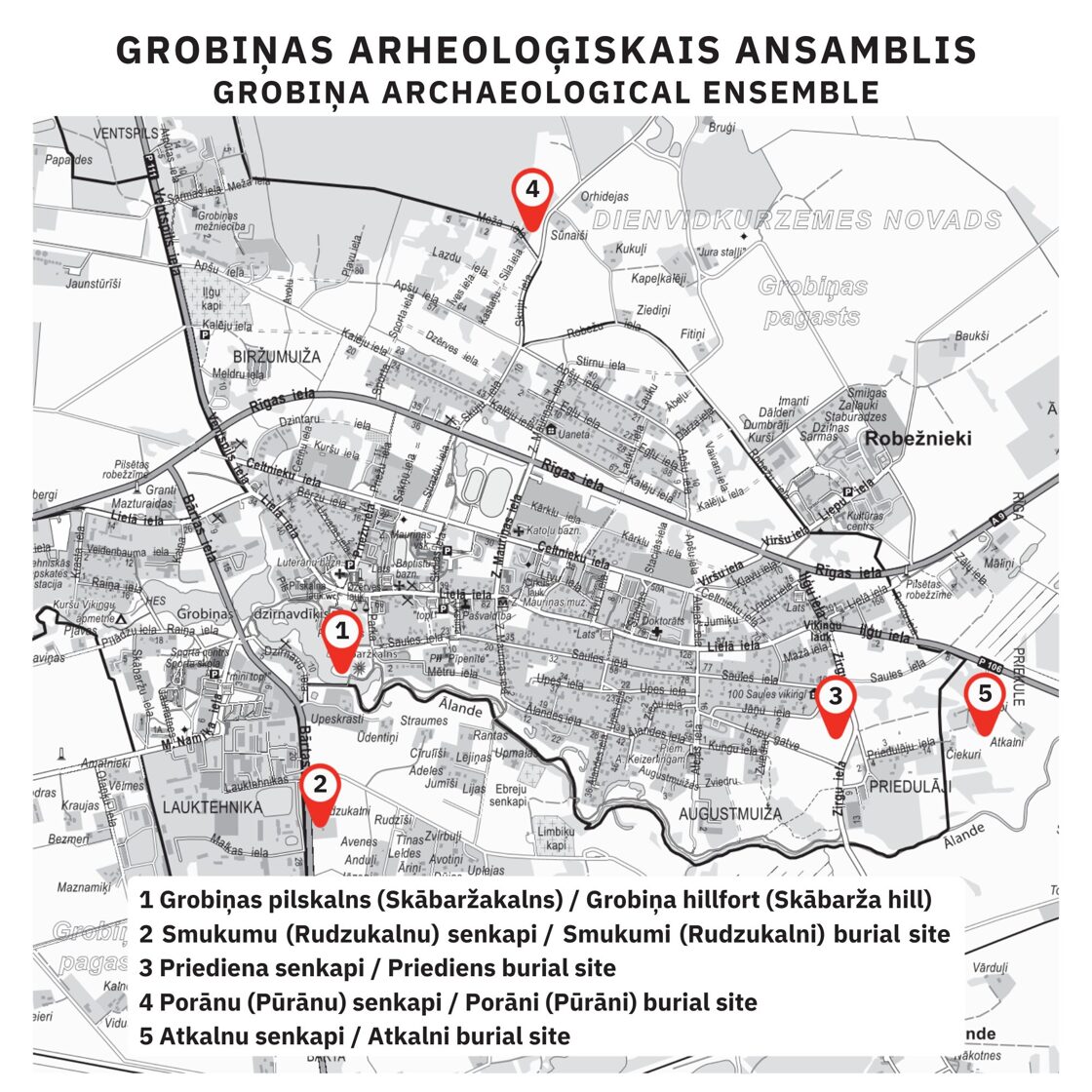Grobiņa Archaeological Ensemble
The Grobiņa Archaeological Ensemble is a globally unique, authentic, and well-preserved collection of pre-Viking era archaeological sites and structures that belonged to Scandinavian settlers and the local Curonian inhabitants. Grobiņa was one of the most significant locations for Scandinavians in the eastern Baltic Sea region, as evidenced by extensive burial sites and the diversity of over 2,000 artifacts uncovered during archaeological excavations, including a 6th–7th century Gotland-style stone stele. Most of the discoveries and research are associated with the 7th–9th centuries, confirming that Grobiņa was a prominent settlement of that time. Due to these findings, Grobiņa is often linked to the ancient "Seeburg," mentioned in the 854 writings of the Archbishop of Hamburg-Bremen, Vita Sancti Anscari, which describes the Swedish King Olof’s conquests in Courland and Apulia.
The Grobiņa Archaeological Ensemble consists of:
- Grobiņa Hillfort (Skābaržkalns) and ancient town
- Smukumi (Rudzukalni) burial site
- Priediena burial site
- Porāni (Pūrāni) burial site
- Atkalni burial site
Archaeology and Research
The interaction between Scandinavian and Curonian cultures is evidenced by burial traditions and artifact forms discovered during archaeological excavations. The first extensive archaeological excavations in Grobiņa were conducted in 1929–1930 under the leadership of Swedish archaeologist Birger Nerman. Since then, the burial sites, ancient town, and hillfort have been repeatedly studied, revealing new insights into the area's history and its inhabitants.
Artifacts uncovered in Grobiņa can be seen at: Liepāja Museum (Latvia), Latvian National Museum of History (Latvia), St. Petersburg Institute of Archaeology (Russia).
The dense cultural layer of ancient settlements and the diversity of burial materials highlight the significant scientific research potential of the Grobiņa Archaeological Ensemble.
Since 2011, the Grobiņa Archaeological Ensemble has been included in the Latvian National List of UNESCO World Heritage.
Early Inhabitants
The earliest known settlement in Grobiņa dates back to the Stone Age. In the early 1st millennium AD, the area became inhabited by the western Baltic Curonian tribe. The Curonians were skilled craftsmen, traders, and warriors. Historical sources suggest they were powerful seafarers, engaging in raids across the Baltic Sea. To this day, numerous place names and street names along the Baltic coastline in Europe are linked to the Curonians.
The name "Grobiņa" is thought to originate from the Curonian word gruobs, meaning "hornbeam" or "hornbeam forest."
Present Day
Despite extensive research and damage caused by wars and economic activity, the burial sites have been at least partially preserved and remain visible in nature. The Priediena burial mound area is particularly prominent. In 2019, the Ālande River Park Nature Trail was opened, connecting Grobiņa Hillfort and the Priediena burial site.
The Grobiņa Hillfort (Skābaržkalns), Priediena, Smukumi, and Pūrāni burial sites are freely accessible for visitors.
Periodically, the living history festival “Seeburg” takes place at Skābaržkalns, offering visitors a chance to travel back in time to ancient Grobiņa, when Curonians and Vikings lived here, and experience traditional crafts. For festival details follow Grobiņas Tūrisms or Dienvidkurzeme Travel on Facebook.
